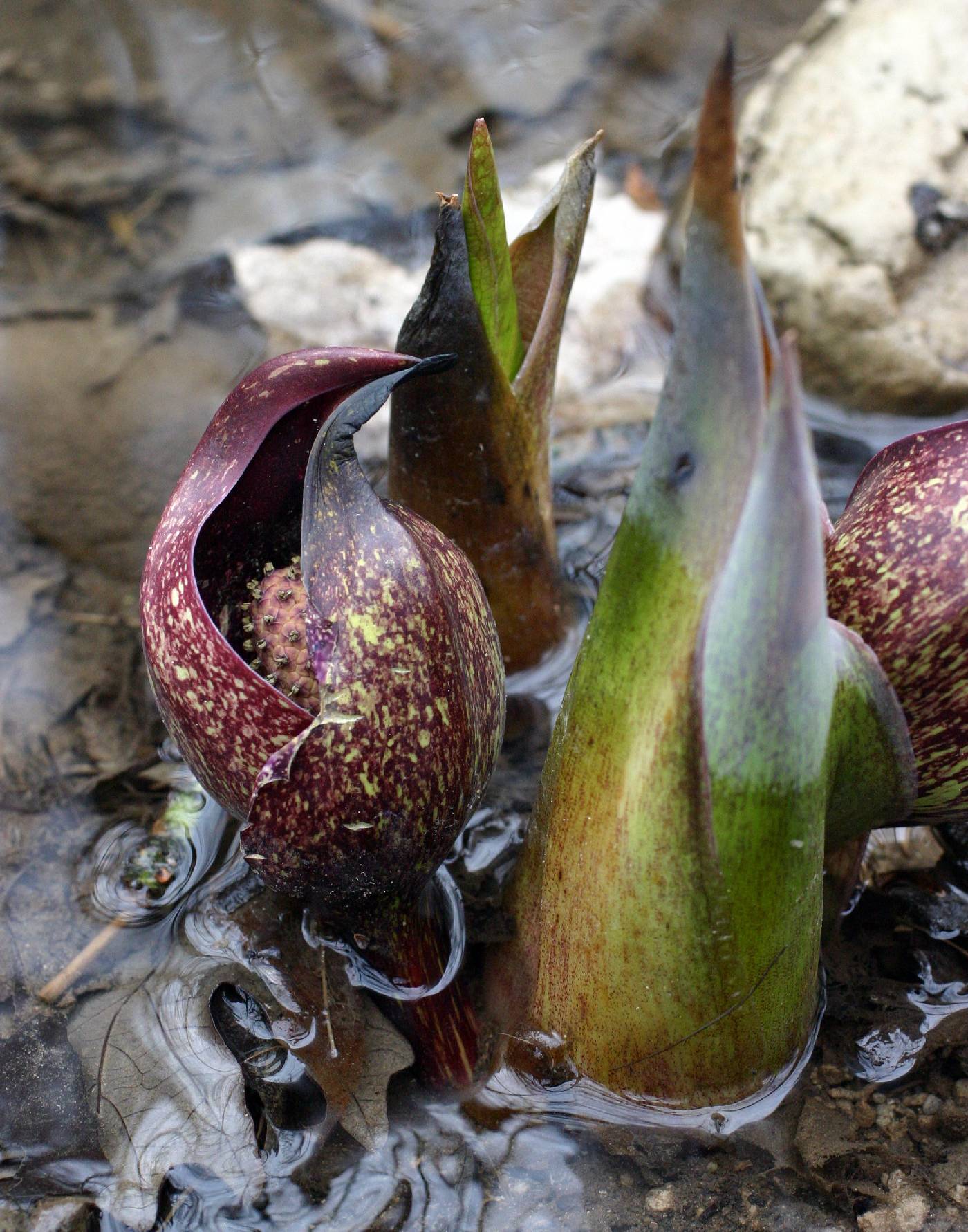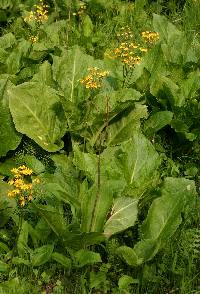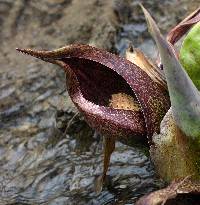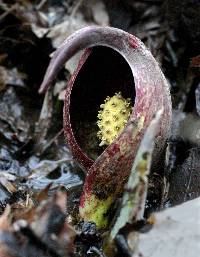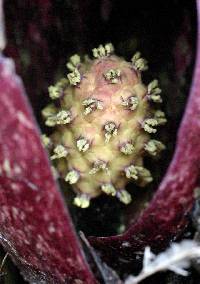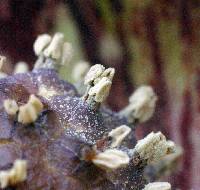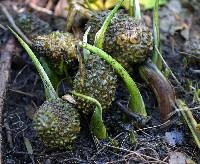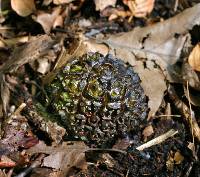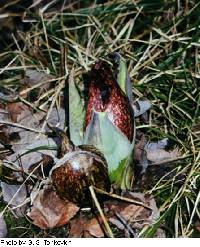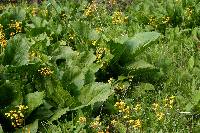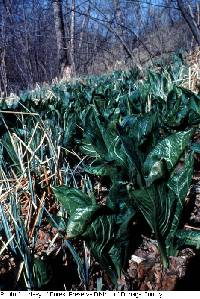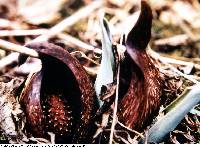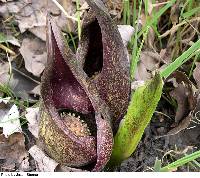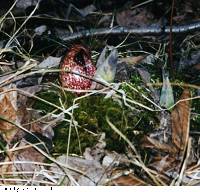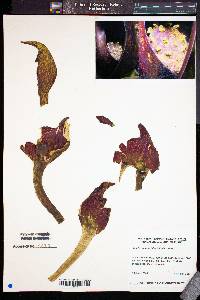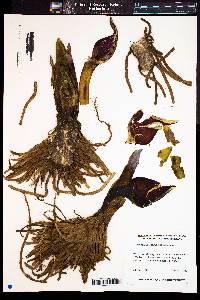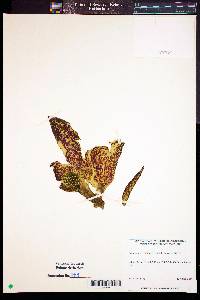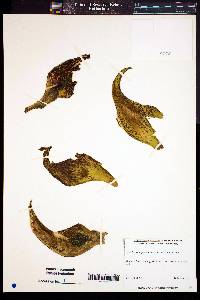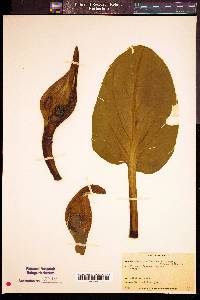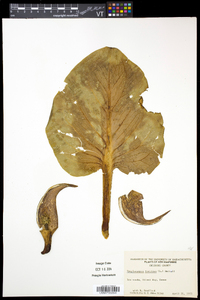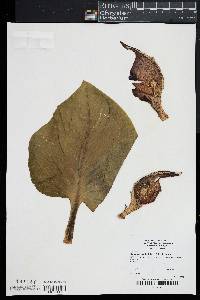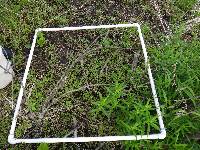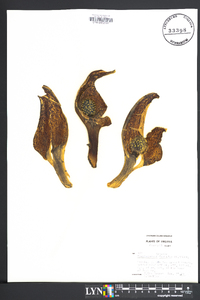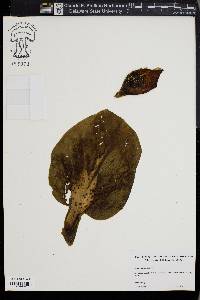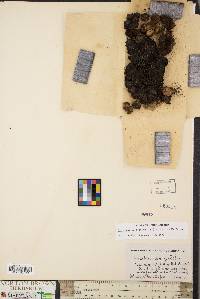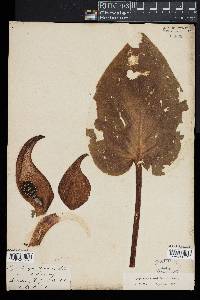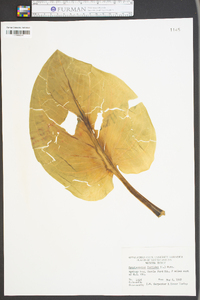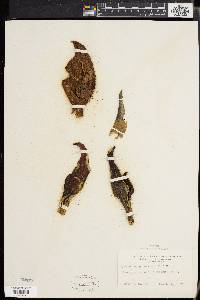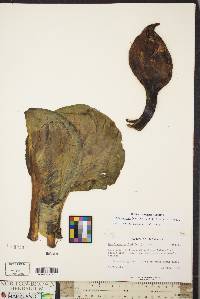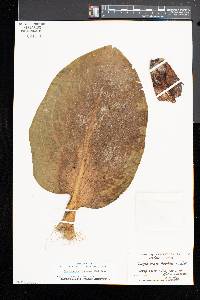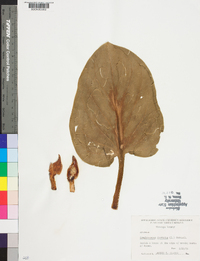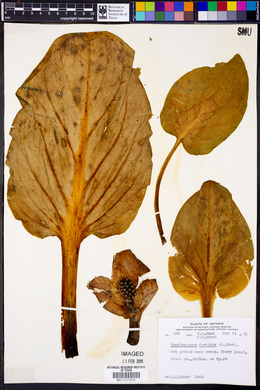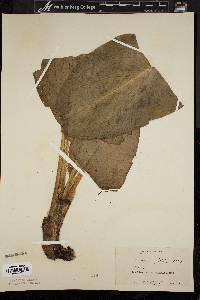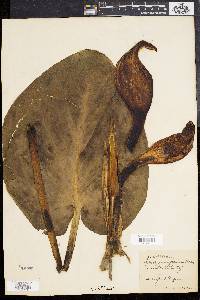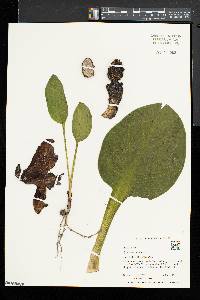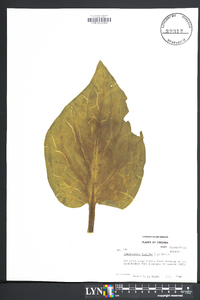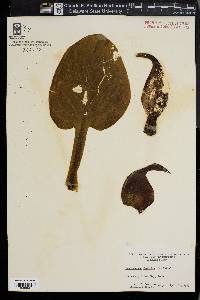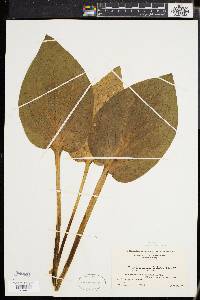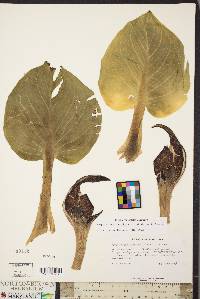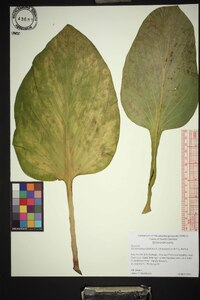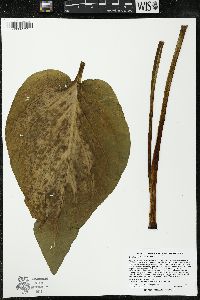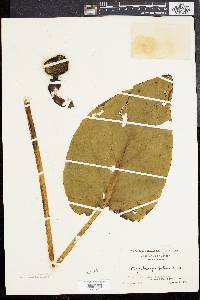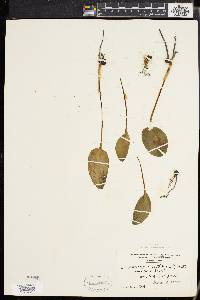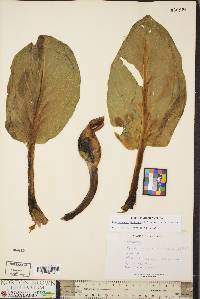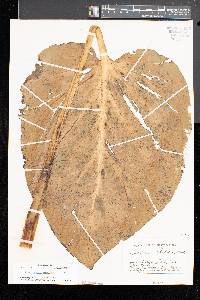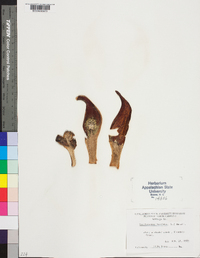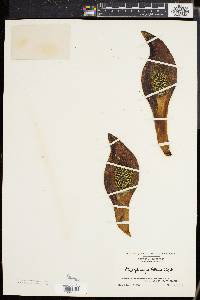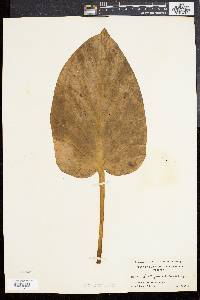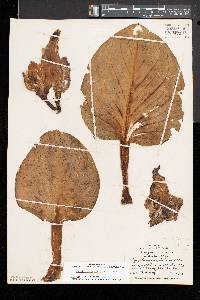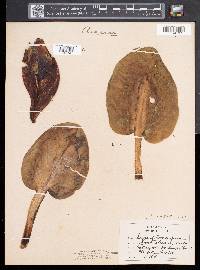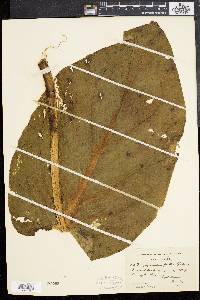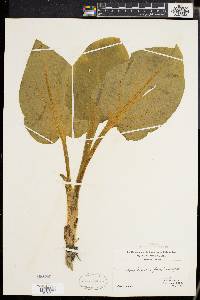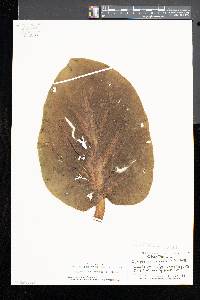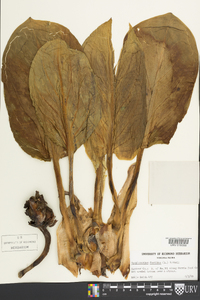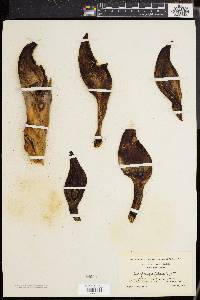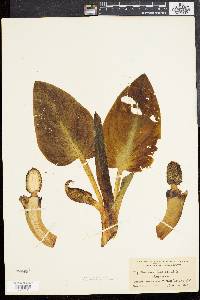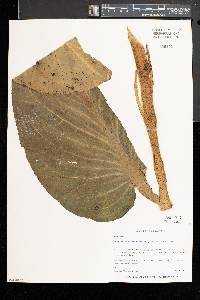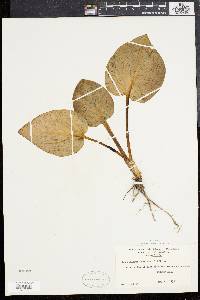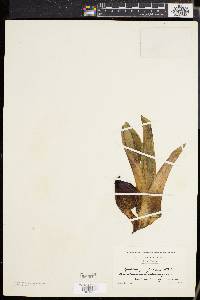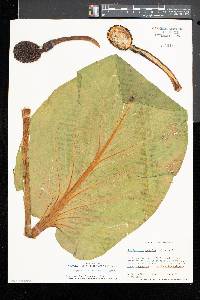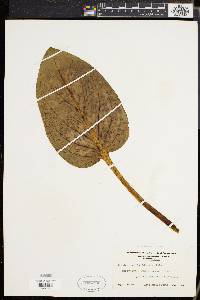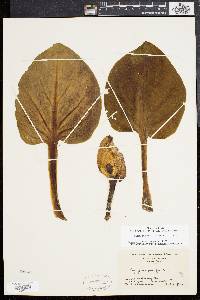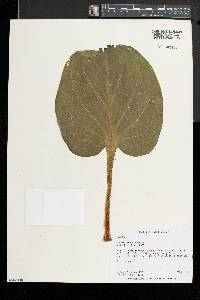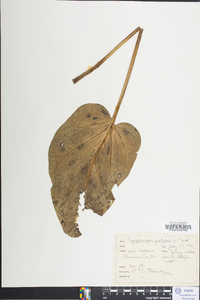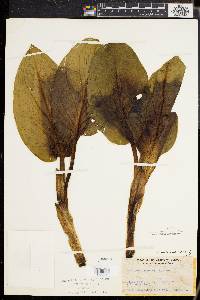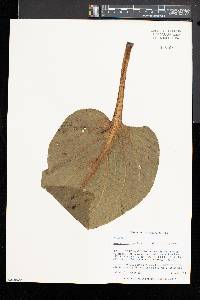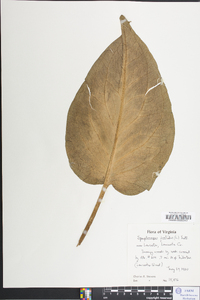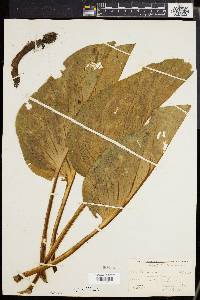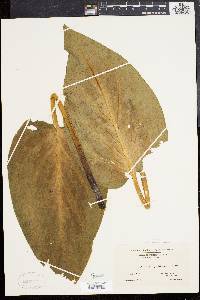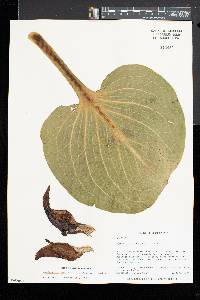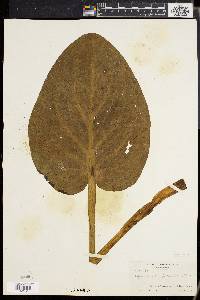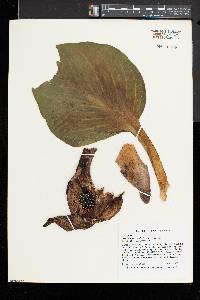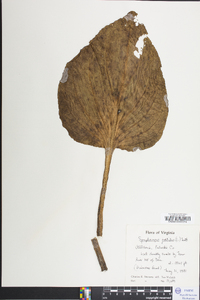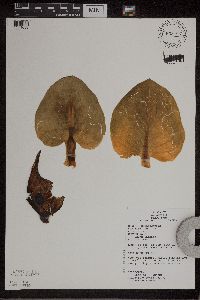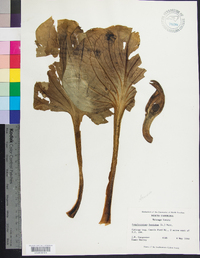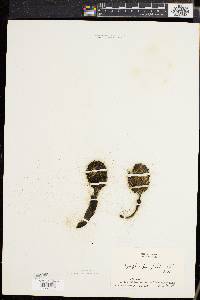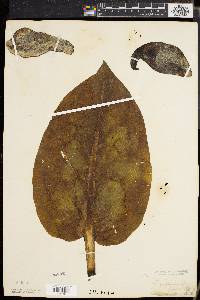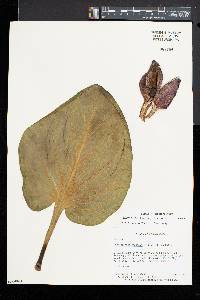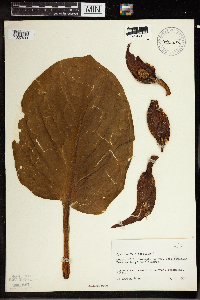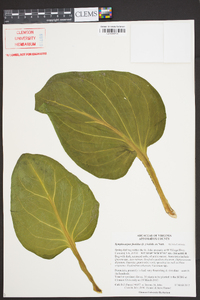Symplocarpus foetidus
|
|
|
|
Family: Araceae
Skunk-Cabbage
[Spathyema angusta Raf.] |
Roots fleshy, contractile. Rhizomes thick, to 30 cm or more. Leaves: petiole sheathed basally, 5--57 cm; blade thick, 10--60 ´ 7--40 cm; primary lateral veins parallel, branching apically, interprimary veins anastomosing. Inflorescences at ground level; spathe hoodlike, 6--13(--18) cm, fleshy, apex acuminate, twisted or incurved, not persisting in fruit; spadix short-stipitate, somewhat flattened dorsiventrally, 2--3 ´ 1.5--3 cm. Flowers covering spadix; tepals 4, yellowish to dark red-purple; stamens 4, dehiscing longitudinally; ovaries 1-locular; ovules 1. Infructescences dark purple-green to dark red-brown, globose to oblong or ovoid, 4--7(--10) cm. Seeds brown, 7--15 mm diam. 2n = 60. Flowering late winter--spring. Swamps, wet woods, along streams, and other wet low areas; 0--1100 m; N.B., N.S., Ont., Que.; Conn., Del., D.C., Ill., Ind., Iowa, Maine, Md., Mass., Mich., Minn., N.H., N.J., N.Y., N.C., Ohio, Pa., R.I., Tenn., Vt., Va., W.Va., Wis. Disagreement exists regarding correct author citation of the combination Symplocarpus foetidus. According to J. T. Kartesz and K. N. Gandhi (1992), concluded that the correct citation is S. foetidus (Linnaeus) Nuttall. The citation I have adopted is S. foetidus (Linnaeus) Salisbury ex W. Barton because Barton, in his 1817 publication, did not specifically attribute this combination to Nuttall; he did cite Salisbury in his first mention of the name S. foetidus. Symplocarpus foetidus was included as occurring in Manitoba (H. J. Scoggan 1957) based on a misidentified specimen (B. Boivin 1967--1979, part 4). Although the species has been listed for Georgia (W. H. Duncan and J. T. Kartesz 1981), I have seen no specimens from that state. A specimen collected by S. B. Buckley labeled Hab. Florida is probably an error. When bruised or broken, all parts of Symplocarpus foetidus give off an unpleasant odor. Various species of insects, including those from the orders Diptera, Coleoptera, Hymenoptera, and Hemiptera, many of which are attracted by the odor, have been collected from the inflorescences (W. W. Judd 1961), but the specific mechanism of pollination remains unknown. Although insects are likely pollen vectors, wind tunnel observa tions of the inflorescence suggest a capacity also for wind pollination (S. Camazine and K. J. Niklas 1984). Whatever the pollination mechanism, fertilization is limited, and few inflorescences develop into infructescences (J. A. Small 1959, personal observation).
Perennial herb to 0.6 m tall Leaves: basal, erect, with a 5 - 57 cm long stalk, 10 cm - 0.6 m long, 7 - 40 cm wide, oblong to egg-shaped with a squared to heart-shaped base and an abruptly pointed to blunt tip. The leaves appear after the flowers. Inflorescence: of many tiny bisexual flowers borne tightly clustered along a spike with a very fleshy axis (spadix), the stalk partly inderground. The yellowish to purplish spadix is 2 - 3 cm long, 1.5 - 3 cm wide, oblong to nearly spherical. A fleshy leaf-like sheath (spathe) is hood-like, mostly enclosing the spadix but open at the tip, green to purplish or spotted to striped with both colors, 6 - 15 cm long, egg-shaped with a pointed to twisted or incurved tip, non-persistent in fruit. Fruit: the enlarged, spongy spadix, dark purplish green to dark reddish brown, 4 - 12 cm across, spherical to oblong, containing brown seeds 0.7 - 1.5 cm across. The seeds are not surrounded by a gelatinous material. Similar species: Calla palustris, Peltandra virginica, Symplocarpus foetidus all have simple leaves and flowers covering most or all of the spadix. Calla palustris has a white spathe and small leaf blades (to 15 cm long) with heart-shaped bases. Peltandra virginica has a green spathe and large (to 0.57 m) arrowhead-shaped leaves with basal lobes. Flowering: mid February to early May Habitat and ecology: Locally common in calcareous fens, springy sites, wet-mesic swamps, and other low areas. Occurence in the Chicago region: native Notes: The skunk cabbage is the earliest native plant in the Chicago Region to bloom. The spadix produces heat, warming the flower up to 25 degrees Celsius above the air temperature. Some speculate that the heat may help promote floral development and pollination in the early spring. Etymology: Symplocarpus comes from the Greek words symploke, meaning connection, and karpos, meaning fruit, referring to the ovaries growing together to form a single fruit. Foetidus means foul-smelling. Author: The Morton Arboretum Malodorous; spathe ovoid with incurved summit, 8-15 cm, green, purplish, or spotted or striped with both; fr globose, 8-12 cm thick; seeds 1 cm thick; lvs basal, short petioled, ovate, cordate, to 6 dm, the veinlets conspicuously anastomosing; 2n=30, 60. Swamps and moist low ground; Que. and N.S. to N.C., w. to Minn. and Io.; e. Asia. Feb.-Apr. (Spathyema f.) Gleason, Henry A. & Cronquist, Arthur J. 1991. Manual of vascular plants of northeastern United States and adjacent Canada. lxxv + 910 pp. ©The New York Botanical Garden. All rights reserved. Used by permission. From Flora of Indiana (1940) by Charles C. Deam In noncalcareous springy places throughout the state although there are few records from the southwestern and unglaciated parts. While the habitat of this species is usually somewhat wetter than that of sweetflag, but otherwise similar, I have never seen them growing together. Acorus calamus, however, prefers sunlight while this species prefers dense shade. The colonies vary in size, usually occupying all the available space in the habitat. …… Indiana Coefficient of Conservatism: C = 8 Wetland Indicator Status: OBL |
|
|
|

